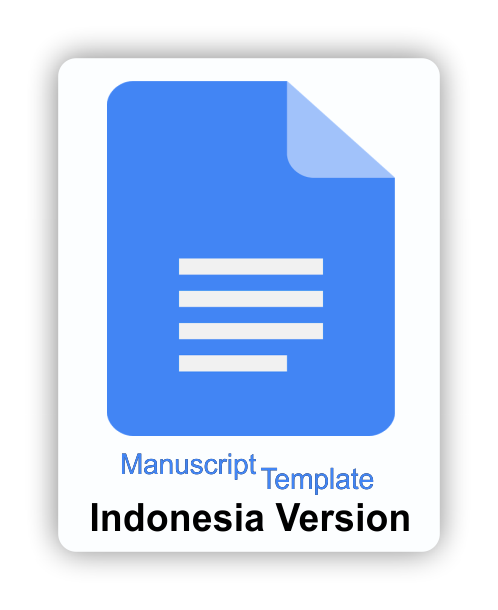Adoption of mobile learning among university students during and after the covid-19 pandemic in Bangladesh
DOI:
https://doi.org/10.21831/jitp.v11i2.70017Keywords:
Mobile learning, Students' perception, National university of Bangladesh, Tertiary education, BangladeshAbstract
Limited research has been done about the adoption of mobile learning among Bangladeshi university students, including those from public, private, and national universities. This study aims to unravel the nuances in students' attitudes influenced by personal and institutional factors, investigating the diverse higher education landscape post-return to traditional classrooms. The survey, encompassing demographic data and mobile technology utilization pre-, during, and post-COVID-19 from 453 Bangladeshi university students, is analyzed to measure their perceptions and attitudes regarding the efficacy of mobile learning. The result varies between public, private, and national university students. While many students have complimented and appreciated mobile learning for its ability to assist with financial struggles, the learning process, and grades, many of them have also reported a decline in the quality of their education during M-learning. Several students have expressed difficulty communicating and concentrating during online sessions. The study suggests that incorporating mobile learning technologies into traditional classroom settings could improve teaching and learning. Further research is needed to understand the impact of institutions on online education acceptance and student perceptions.
References
Adejo, O. W., Ewuzie, I., Usoro, A., & Connolly, T. (2018). E-learning to m-learning: Framework for data protection and security in cloud infrastructure. IJITCS: International Journal of Information Technology and Computer Science, 10(4), 1–9. https://doi.org/10.5815/ijitcs.2018.04.01
Alam, M. J., Ogawa, K., & Islam, S. R. Bin. (2023). E-learning as a doubled-edge sword for academic achievements of university students in developing countries: Insights from Bangladesh. Sustainability, 15(9), 1–15. https://doi.org/10.3390/su15097282
Anastasiades, P. S., Filippousis, G., Karvunis, L., Siakas, S., Tomazinakis, A., Giza, P., & Mastoraki, H. (2010). Interactive Videoconferencing for collaborative learning at a distance in the school of 21st century: A case study in elementary schools in Greece. Computers & Education, 54(2), 321–339.
https://doi.org/10.1016/j.compedu.2009.08.016
Azad, M. A. K. (2022). Bangladesh mobile ownership. Media Landscapes.
https://medialandscapes.org/country/bangladesh/telecommunications/mobile-ownership
Badiuzzaman, M., Md. Rafiquzzaman, Rabby, M. I. I., & Rahman, M. M. (2021). The latent digital divide and its drivers in e-learning among bangladeshi students during the covid-19 pandemic. Information, 12(8), 1–13. https://doi.org/10.3390/info12080287
Barua, A. (2020). The impact of covid-19 pandemic: Education sector of Bangladesh. BIPSS Commentary. https://bipss.org.bd/pdf/The impact of COVID-19 Pandemic-Education sector of Bangladesh.pdf
Basak, S. K., Wotto, M., & Bélanger, P. (2018). E-learning, m-learning and d-learning: Conceptual definition and comparative analysis. E-Learning and Digital Media, 15(4), 191–216. https://doi.org/10.1177/2042753018785180
BBS, & UNICEF. (2022). National survey on children's education in Bangladesh. https://bbs.portal.gov.bd/sites/default/files/files/bbs.portal.gov.bd/page/57def76a_aa3c_46e3_9f80_53732eb94a83/2023-03-23-09-59-6b43ab13fe2a201e9dcf21d20f4fa127.pdf
Beaunoyer, E., Dupéré, S., & Guitton, M. J. (2020). Covid-19 and digital inequalities: Reciprocal impacts and mitigation strategies. Computers in Human Behavior, 11(1), 1–9. https://doi.org/10.1016/j.chb.2020.106424
Behera, S. K. (2013). E- and m-learning: A comparative study. IJONTE: International Journal on New Trends in Education and Their Implications, 4(3), 65–78. https://r.search.yahoo.com/_ylt=Awrx_1g1D2lmNncAiHjLQwx.;_ylu=Y29sbwNzZzMEcG9zAzEEdnRpZAMEc2VjA3Ny/RV=2/RE=1718190005/RO=10/RU=http%3A%2F%2Fwww.ijonte.org%2FFileUpload%2Fks63207%2FFile%2F08.behera.pdf/RK=2/RS=OItHw_u.9lcUVCvsUUXNq9NCrt0-
Biswas, B., Roy, S. K., & Roy, F. (2020). Students perception of mobile learning during covid-19 in Bangladesh: University student perspective. Aquademia, 4(2), 1–9. https://doi.org/10.29333/aquademia/8443
Bozkurt, A., Jung, I., Icon, Xiao, J., Vladimirschi, V., Schuwer, R., Egorov, G., Lambert, S. R., Al-Freih, M., Pete, J., Olcott, J. D., Rodes, V., Aranciaga, I., Bali, M., Alvarez, Jr., A. V, Roberts, J., Pazurek, A., Raffaghelli, J. E., Panagiotou, N., ... Paskevicius, M. (2020). A global outlook to the interruption of education due to covid-19 Pandemic: Navigating in a time of uncertainty and crisis. Asian Journal of Distance Education, 15(1), 1–126. https://doi.org/10.5281/zenodo.3778083
Chanda, M., Rahman, S., & Sarker, M. M. (2022). Impact of internet connectivity on education system in Bangladesh during covid-19. Intenational Journal Advanced Networking and Applications, 13(4), 5063–5068. https://doi.org/10.35444/ijana.2022.13408
Chowdhury, M. K., & Behak, F. B. P. (2022). Online higher education in Bangladesh during covid-19: Its challenges and prospects. UTAMAX: Journal of Ultimate Research and Trends in Education, 4(1), 15–28. https://doi.org/10.31849/utamax.v4i1.7818
Criollo, S. C., Luján, S. M., & Alcázar, A. J. (2018). Advantages and disadvantages of m-learning in current education Santiago. 2018 IEEE World Engineering Education Conference (EDUNINE), 1(1), 1–6. https://doi.org/10.1109/EDUNINE.2018.8450979
Emon, E. K. H., Alif, A. R., & Islam, M. S. (2020). Impact of covid-19 on the institutional education system and its associated students in Bangladesh. Asian Journal of Education and Social Studies, 11(2), 34–46. https://doi.org/10.9734/ajess/2020/v11i230288
Georgiev, T., Georgieva, E., & Smrikarov, A. (2004). M-learning a new stage of e-learning. CompSysTech '04: Proceedings of the 5th International Conference on Computer Systems and Technologies, 1–5. https://doi.org/10.1145/1050330.1050437
Hasan, M. (2022). 48% mobile phone customers in Bangladesh have a smartphone. The Daily Star. https://www.thedailystar.net/business/telecom/news/smartphone-penetration-fast-approaching-50pc-3031216
Hosen, M., Uddin, M. N., Hossain, S., Islam, M. A., & Ahmad, A. (2022). The impact of covid-19 on tertiary educational institutions and students in Bangladesh. Heliyon, 8(1), 1–9. https://doi.org/10.1016/j.heliyon.2022.e08806
Insorio, A. O. (2021). Technological and operational mobile learning readiness of secondary teachers. International Journal of Pedagogical Development and Lifelong Learning, 2(1), 1–10. https://doi.org/10.30935/ijpdll/9362
Kacetl, J., & Klímová, B. (2019). Use of smartphone applications in english language learning a challenge for foreign language education. Education Sciences, 9(3), 1–9. https://doi.org/10.3390/educsci9030179
Kameke, L. von. (2024). Internet penetration rate Bangladesh 2011-2020. Statista. https://www.statista.com/statistics/764102/internet-penetration-rate-bangladesh/
Kemp, S. (2022). Digital 2022: Bangladesh. DATAREPORTAL. https://datareportal.com/reports/digital-2022-bangladesh
Khan, M. M., Rahman, S. M. T., & Islam, S. T. A. (2021). Online education system in Bangladesh during covid-19 pandemic. Creative Education, 12(2), 441–452. https://doi.org/10.4236/ce.2021.122031
Khan, R. M. I., Ali, A., Alourani, A., Kumar, T., & Shahbaz, M. (2022). An investigation of the educational challenges during covid-19: A case study of Saudi students' experience. European Journal of Educational Research, 11(1), 353–363. https://doi.org/10.12973/eu-jer.11.1.353
Kí¶nig, J., Jäger-Biela, D. J., & Glutsch, N. (2022). Adapting to online teaching during covid-19 school closure: Teacher education and teacher competence effects among early career teachers in Germany. European Journal of Teacher Education, 43(4), 608–622. https://doi.org/10.1080/02619768.2020.1809650
Mukherjee, H. G., Nagashima, Y., Nomura, S., Rahman, M., Rahman, M. A., Al-Zayed, S. R., & Dhar, S. S. (2014). A study on national university and affiliated colleges in Bangladesh (No. 1; 84428). http://documents.worldbank.org/curated/en/942041468209656122/A-study-on-national-university-and-affiliated-colleges-in-Bangladesh
Murphy, M. P. A. (2020). Covid-19 and emergency e-learning: Consequences of the securitization of higher education for post-pandemic pedagogy. Contemporary Security Policy, 41(3), 492–505. https://doi.org/10.1080/13523260.2020.1761749
Owusu, C. F., Koomson, C. K., & Hanson, D. (2020). The impact of covid-19 on learning-the perspective of the Ghanaian student. European Journal of Education Studies, 7(3), 88–101. https://doi.org/10.5281/zenodo.3753586
Qashou, A. (2021). Influencing factors in m-learning adoption in higher education. Education and Information Technologies, 26(1), 1755–1785. https://doi.org/10.1007/s10639-020-10323-z
Rouf, M. A., Hossain, M. S., Habibullah, M., & Ahmed, T. (2022). Online classes for higher education in Bangladesh during the covid-19 pandemic: A perception-based study. PSU Research Review. https://doi.org/10.1108/PRR-05-2021-0026
Rundle, A. G., Park, Y., Herbstman, J. B., Kinsey, E. W., & Wang, Y. C. (2020). Related school closings and risk of weight gain among children. Obesity (Silver Spring), 28(6), 1008–1009. https://doi.org/10.1002/oby.22813
Sahu, P. (2020). Closure of universities Due to coronavirus disease 2019 (COVID-19): Impact on education and mental health of students and academic staff. Cureus, 12(4), 1–5. https://doi.org/10.7759/cureus.7541
Sarkar, S. S., Das, P., & Rahman, M. M. (2021). Perceptions of public university students towards online classes during covid-19 pandemic in Bangladesh. Frontiers in Education, 6, 1–9. https://doi.org/10.3389/feduc.2021.703723
Sorder, M. A. R. (2020). Lockdown Bangladesh country report. https://www.coronanet-project.org/data/reports/finished/20200822_Bangladesh.html
Toquero, C. M. (2020). Challenges and opportunities for higher education amid the covid-19 pandemic: The Philippine context. Pedagogical Research, 5(4), 1–5. https://doi.org/10.29333/pr/7947
Uddin, M. (2020). Effects of the pandemic on the education sector in Bangladesh. The Financial Express. https://thefinancialexpress.com.bd/views/analysis/effects-of-the-pandemic-on-the-education-sector-in-bangladesh-1592061447
UGC. (2021). University grants Commission of Bangladesh. The University Grants Commission of Bangladesh. https://ugc.gov.bd/sites/default/files/files/ugc.portal.gov.bd/annual_reports/fb44616e_6f11_4612_affd_4bde0dab3382/2023-01-30-09-12-5f4ee739c6dd6932b184ba8fb396f541.pdf
Viberg, O., Wasson, B., & Hulme, A. K. (2020). Mobile-assisted language learning through learning analytics for self-regulated learning (MALLAS): A conceptual framework. AJET: Australian Journal of Educational Technology, 36(6), 34–52. https://doi.org/10.14742/ajet.6494
Wallace, R. M. (2003). Online learning in higher education: A review of research on interactions among teachers and students. Education, Communication & Information, 3(2), 241–280. https://doi.org/10.1080/14636310303143
YaÄŸcı, M. (2018). Impact of the individual innovativeness characteristics on success and contentment at the computer programming course: A web-based blended learning experience. MOJET: The Malaysian Online Journal of Educational Technology, 6(4), 29–39. https://doi.org/10.17220/mojet.2018.04.003
Zuñiga, C. C., Pego, L., Escamilla, J., & Hosseini, S. (2021). The impact of the covid-19 pandemic on students' feelings at high school, undergraduate, and postgraduate levels. Heliyon, 7(3), 1–11. https://doi.org/10.1016/j.heliyon.2021.e06465
Downloads
Published
How to Cite
Issue
Section
License
The journal allows the author(s) to hold the copyright without restrictions. Finally, the journal allows the author(s) to retain publishing rights without restrictions
 | Jurnal Inovasi Teknologi Pendidikan by http://journal.uny.ac.id/index.php/jitp is licensed under a Creative Commons Attribution-ShareAlike 4.0 International License. |













